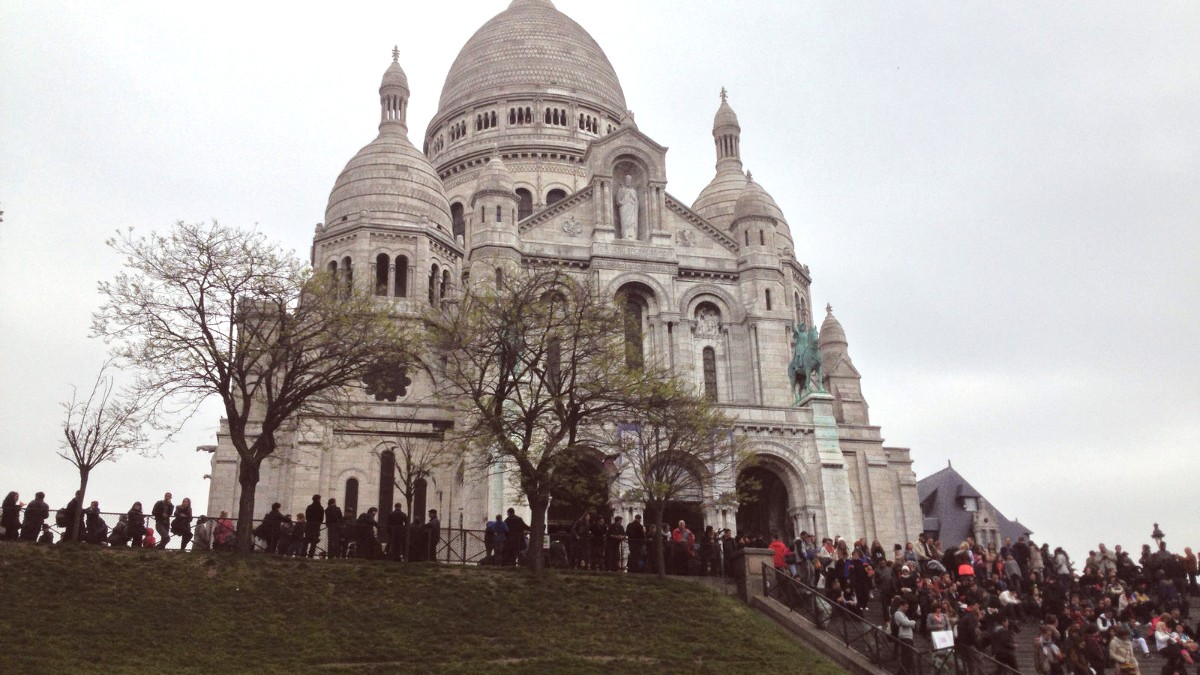
Paris, France
Once a village outside Paris, Montmartre attracted artists, writers, and thinkers during the Belle Époque. Its narrow cobblestone streets, hidden courtyards, and panoramic views of the city continue to captivate. It's a place where history, art, and local life blend seamlessly.
Montmartre's history as a haven for artists like Picasso, Van Gogh, and Renoir lends it an unique cultural vibrancy. Their presence shaped the district, leaving an enduring legacy that visitors experience today.
From the historic Moulin Rouge at its base to the quiet vineyards on its slopes, Montmartre offers a journey through different facets of Parisian life. Prepare to discover a neighborhood that truly stands apart.
Paris experiences a temperate climate, presenting four distinct seasons, each with its own advantages and character.
High Season (June-August, Mid-December) includes warm weather, extended daylight hours, many outdoor events and festivals, and a festive atmosphere during the holidays in December. Expect the largest crowds, highest prices for accommodation and flights, and potentially very hot weather with longer queues. Shoulder Season (April-May, September-October) includes pleasant temperatures, fewer crowds, and generally lower prices for travel and lodging. Weather can be variable, with rain possible. Low Season (November-March, excluding mid-December) includes the fewest crowds, leading to shorter wait times and a relaxed atmosphere. It has the lowest prices for flights and accommodation. Cold weather prevails, daylight hours are shorter, and some attractions may operate with reduced hours.
Spring and Autumn offer comfortable temperatures for extended walks and discovering Montmartre's charming streets.
Summer hosts a variety of outdoor events and festivals, providing a lively cultural experience.
Winter provides a great time to explore Paris's world-class museums and indoor attractions, escaping the colder weather while enjoying the city's offerings.
Heatwaves can occur in July and August. Stay hydrated and seek shade. Short periods of heavy rain are possible year-round. An Umbrella or Light rain jacket is a useful addition.
For a relaxed visit with good weather and fewer crowds, the shoulder seasons are a good choice.
Spring (April-May): 10-20°C (50-68°F). Moderate rainfall, blooming gardens. Summer (June-August): 18-28°C (64-82°F), can exceed 30°C (86°F). Lower precipitation, higher humidity. Long daylight hours. Autumn (September-October): 10-20°C (50-68°F). Moderate rainfall. Winter (November-March): 3-10°C (37-50°F). Higher precipitation (rain, sleet), occasional light snow. Shorter daylight.
Warm weather and festivals attract many visitors. Crowds are at their peak, and prices for hotels and flights are at their highest. Be ready for busy attractions.
Fewer crowds and lower prices define the low season. The city takes on a cozy atmosphere, perfect for museum visits and experiencing local life.
Paris's diverse climate means something new each season. Choose your travel dates to match your preferred activities and atmosphere.
Your nationality determines the specific visa type and application steps. Prepare documentation with care.
France belongs to the Schengen Area, meaning non-EU/EEA/Swiss citizens may need a Schengen visa. VisaHQ and iVisa can assist with the application process.
This visa permits tourism, business, or family visits for up to 90 days within any 180-day period. This is the most common visa type for tourists.
For stays over 90 days (study, work, residence), a specific long-stay visa is necessary. The application process is more involved.
As of 2025, visa-exempt non-EU nationals will need ETIAS travel authorization before their trip. This is a pre-travel screening system.
Gather these documents for a short-stay Schengen visa application:
This section provides a detailed breakdown of expenses for different travel styles, along with tips for saving money.
The official currency in France is the Euro (€). Major credit cards are widely accepted. Inform your bank of your travel plans. Avoid exchanging large amounts of cash at airports due to less favorable rates.
Daily Estimate: €50-€90 (Hostel dorm/budget hotel, groceries, public transport, free attractions)
Daily Estimate: €120-€250 (3-star hotel/Airbnb, casual restaurants, public transport, paid attractions)
Daily Estimate: €400+ (4-5 star hotel, fine dining, taxis, private tours, exclusive experiences)
Accommodation (Montmartre/Paris): Hostel bed: €25-€50, Budget hotel: €70-€120, Mid-range hotel: €120-€250, Luxury hotel: €250-€1000+.
Meals: Baguette sandwich/croissant: €3-€7, Coffee: €2-€5, Budget meal: €8-€15, Mid-range restaurant: €18-€35, Fine dining: €70-€200+.
Transportation (Single Ticket): Metro/bus (t+ ticket): €2.15 (individual), €17.35 (carnet of 10). Taxi (short ride): €10-€20.
Attractions: Sacré-Cœur Basilica: Free (main entrance), Dome/crypt: €8-€10. Musée de Montmartre: ~€15. Moulin Rouge show: €100-€250+.